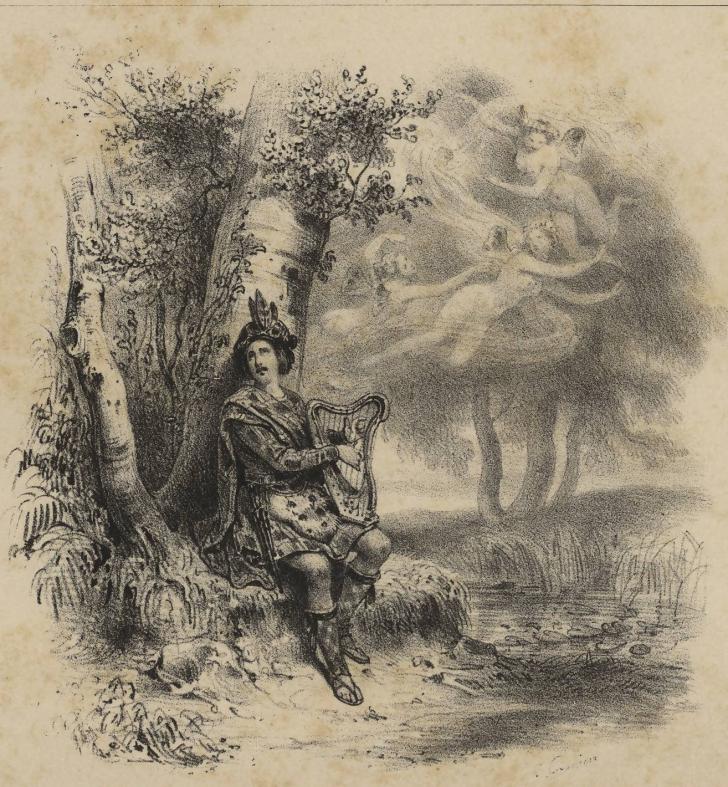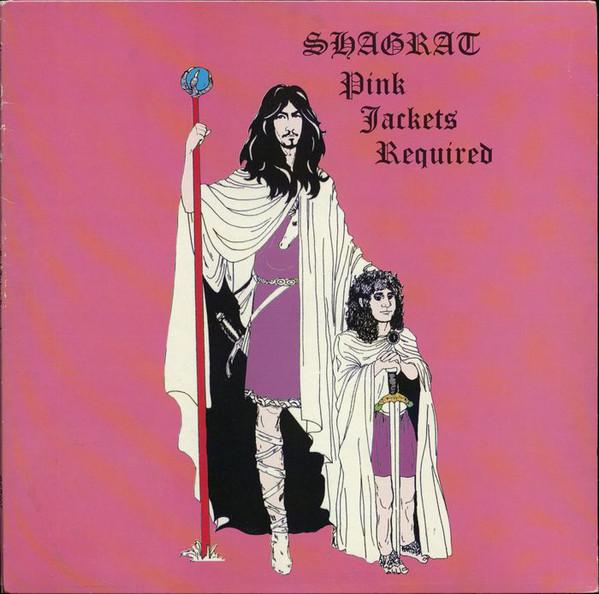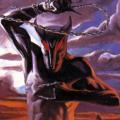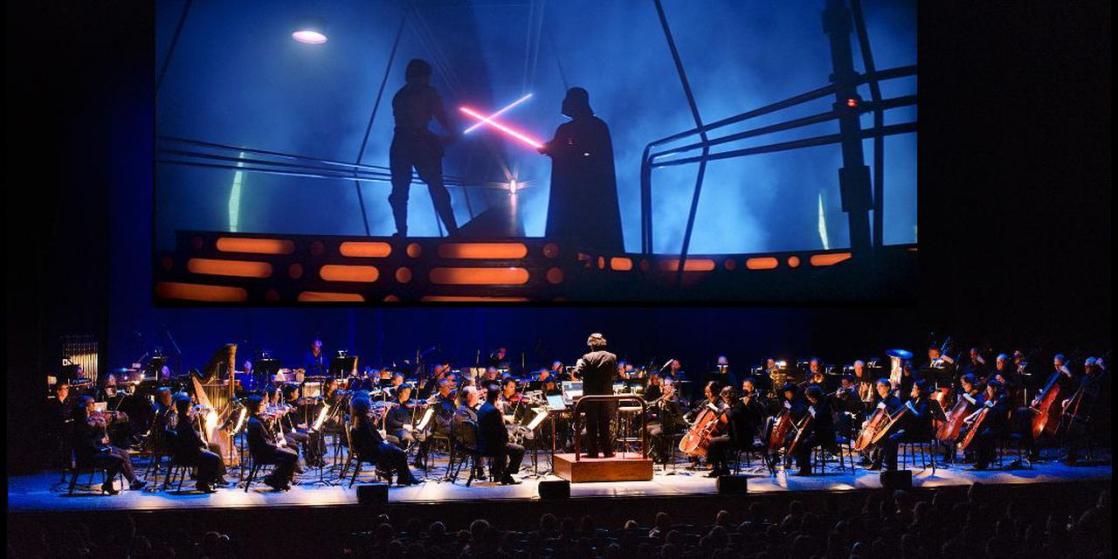Music and Fantasy in Perfect Harmony
In films or novels, music accompanies fantasy everywhere. Many composers, in turn, have immersed themselves in the genre, from film music to rock, rap and metal.
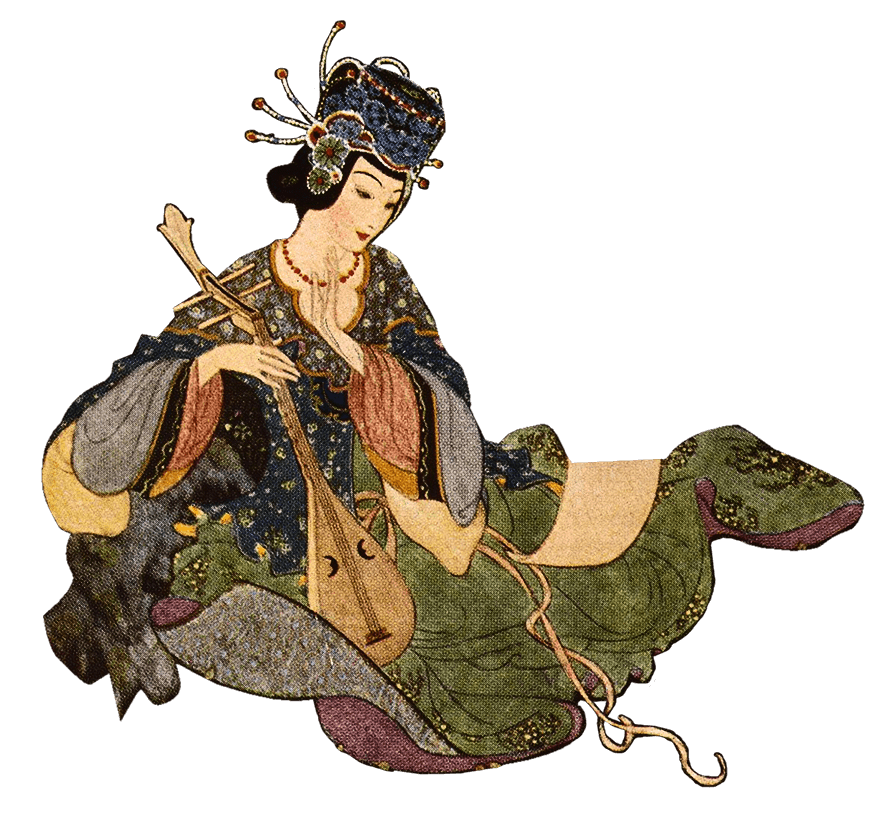
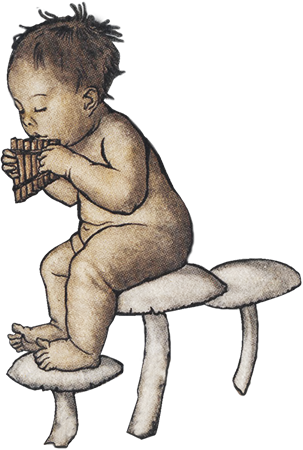
The ballad, a medieval lyrical and musical genre, came back into fashion at the beginning of the 19th century with the advent of medievalism and poems such as La Belle Dame sans Merci (1819) by John Keats. The term evokes both children's songs and popular compositions, which go back to a past that is poorly identified but still perceived as archaic, and which romantic authors and scholars would enjoy composing. This is the case of Walter Scott (Minstrelsy of the Scottish Border, 1802), who refers us to the literary archetype of the wandering minstrel, as the "Troubadour Style" spread to painting in 19th-century France. We also find ballad in the noun "baladine", a traveller whom the reader accompanies to a faraway, imaginary and enchanted universe. So it is not surprising that fantasy, heir to English medievalism, is a genre imbued with music.
Tolkien and Music
J.R.R. Tolkien punctuates his characters' travels with song, evoking both times of old – that of the elves in "The Fall of Gil-galad" (The Brotherhood of the Ring, 1954) – but also the long march of his heroes towards the unknown ("The Road Goes Ever On", in The Hobbit). Tolkien later explains that his imaginary world was created by a song, a wonderful music pronounced by divine beings, the Ainur. Their voices, he tells us in The Silmarillon, "like unto harps and lutes, and pipes and trumpets, and viols and organs, and like unto countless choirs singing with words, began to fashion the theme of Iluvatar to a great music". The image invokes a classical symphony orchestra capable of conferring an epic dimension on a composition.
Tolkien's songs, as well as the maps and illustrations he produced, give the imaginary world of Middle-earth a depth that allows readers to completely immerse themselves in it. They were quickly set to music, as early as 1967, during the author's lifetime, in an LP entitled Poems and Songs of Middle Earth, in which we hear not only Tolkien reciting some of his verses, but also interpretations of his songs by an opera singer, William Elvin. This record was one of the first examples of multimedia fantasy creation, where, in response to demand by curious fans, sound and visual elements are added to a literary fantasy world (illustrations, notably through calendars), a process that naturally leads to the staging of film or television versions.
Progressive Rock and Counterculture
As a genre full of references to music, fantasy would quickly influence composers, particularly those of the protest generation of the 1960s, who saw in Tolkien's works, and more broadly in magical medievalism, an instrument for criticizing the contemporary industrial and military world. Leonard Nimoy, star of the television series Star Trek, played "The Ballad of Bilbo Baggins" in 1967. In England, Tolkien's influence was first noticed among "folk" musicians, a genre that tends to reproduce popular past sounds. From 1968 onwards, one of the members of the band Tyrannosaurus Rex adopted the stage name Steve Peregrin Took, alluding to one of the four hobbits of The Lord of the Rings. In 1970, he founded his own band, Shagrat, a name that this time referred to an orca from Tolkien's trilogy.
But it was progressive rock musicians who would draw their inspiration from fantasy the most. This musical genre is constructed like a psychedelic journey far from contemporary reality, a "trip" often triggered by the use of hallucinogenic drugs. It is thus made up of long pieces evoking imaginary worlds. The title of leading progressive rock band Pink Floyd's first album, The Piper at the Gates of Dawn (1967), was a direct reference to Kenneth Grahame's youth fantasy novel The Wind in the Willows (1908). The characters in the story, anthropomorphic animals, see the god Pan playing a piece on his flute at dawn. This scene, a favorite of Sid Barrett, singer of Pink Floyd and close friend of Steve Peregrin Took, epitomizes the psychedelic genre. The music here goes hand in hand with a return to a childlike time, a (re)birth (the dawn) in a rural, animal and magical dream, far from the modern world. "The Gnome", one of the tracks of The Piper at the Gates of Dawn, evokes a small people living in a land of Cocaigne, like the Hobbits in Tolkien's Shire.
The Gnome
Album: The Piper At The Gates Of Dawn 33 rpm vinyl, LP
BnF, département de l’Audiovisuel, BSU/67-998 © Columbia, 1967
The popularity of magical themes in progressive rock would later inspire metal musicians and songwriters, who like fantasy writers, plunge their audience into a medieval fantasy world.
Symphony and Epic Music
At the same time, fantasy quickly began producing original tracks, especially for feature films and associated video games. Many of these works resembled compositions for opera, especially those by Richard Wagner, which are still a reference today, or for symphony orchestras, such as the soundtrack of the film Conan the Barbarian (1982) by Basil Poledouris. These songs have become so popular that they have been adapted for performances in concert halls, as is the case for example with the soundtrack of Star Wars (composed by John Williams) or that of The Lord of the Rings trilogy (written by Howard Shore). One of the most remarkable examples is undoubtedly Koji Kondo's music for the video game The Legend of Zelda (1986). Produced at the time with synthesizers to run on the first consoles, it was rewritten for a classical orchestra, and toured the world several times to celebrate the game's 25th anniversary. This phenomenon shows both the fascination of an audience of adult fans for the adventurous and imaginary ballads of their childhood, but also the increasing acceptance of fantasy in society. Thereafter, these productions were performed in symphony halls that are more associated with a legitimate, bourgeois and learned culture.
The popularity of fantasy at the beginning of the 21st century continued to influence artists in popular musical genres, especially in those who until then had taken little inspiration from medieval magic. This imaginary world referred to a theme that was too "Europe-centered" and not conducive to arousing interest in the poor neighborhoods of large Western cities where many people from the African continent or the Middle East live. However, from the 1990s onwards, the image of the medievalist warrior, particularly Chinese warriors, fascinated certain hip-hop artists and rappers, such as the Wu-Tang Clan with their album Enter the Wu-Tang (36 Chambers) released in 1993, or the French artist Shurik'N with his song "Samurai" (1998). This music quickly became imbued with fantasy and albums, such as L'École du micro d'argent (1997) by the French group IAM, made direct reference to the genre. Shortly after the release of the Game of Thrones series, this fascination led to the publication on the Internet of two mixtapes entitled Catch The Throne (2014 and 2015), in which famous figures of American rap appear: Common, Wale, Snoop Dogg, and Method Man (a member of the Wu-Tang Clan).
Rap and Social Mobility
With hip-hop, it is not so much the magical journey that is imagined, but the epic nature of the bloody battles of The Game of Thrones, and the possibility of imagining oneself in a fictional world, having made it to the top of the social ladder at the cost of great danger. These stories inspire rappers, who see it as an echo of their own journey from the slums of big American cities to fame and fortune. We find this idea not only in Wale's "King Slayer" ("I'm a Lannister," he shouts, "[I] run my town, that's Seven Kingdoms"), but also in "Parti de rien", a song composed by Sofiane, a rapper from Stains in Seine-Saint-Denis. Accompanying the French release of Guy Ritchie's King Arthur: Legend of the Sword (2017) (a version of the Camelot myth strongly marked by fantasy), the song begins as follows: "Lift up the street, as you would lift up the Grail".
Parti de rien
Album: Bandit Saleté
1 compact disc + 1 brochure
BnF, département de l’Audiovisuel, SDC 12-326365
© Universal music, 2017
Female rappers have also taken this idea on board, adding a gendered dimension to it. Snow Tha Product, in Catch the Throne, thus compares herself to Daenerys Targaryen, a queen who must impose herself in a male world. The music here echoes the significant feminization of the genre, with more and more female heroines and authors now in the spotlight.
